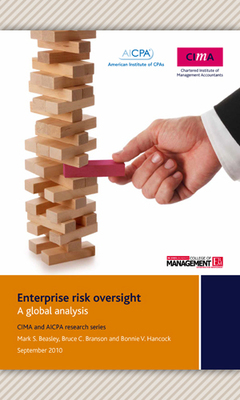Enterprise risk oversight: a global analysis 
The recent global economic crisis is causing boards of directors and senior executives of organisations of all types and sizes to re-evaluate their approaches to risk oversight. Some of the well publicised failures have led many to question how excessive risk-taking went unrecognised by key participants in the corporate governance process. Others have focused on how compensation structures provided strong incentives for excessive risk taking on the part of management to the detriment of key stakeholders, while others demonstrate how the focus on risks in many organisations is too ad hoc and unstructured or too heavily focused on operational and compliance risks, failing to monitor emerging, strategic risks affecting stakeholder value.
To gain a sense of the state of enterprise risk oversight around the globe following the economic crisis, the AICPA and CIMA conducted surveys of organisational leaders. This report provides a brief overview of key findings observed.
- Management accounting: Technical: Risk management & internal control: Risk management policies & procedures, Expert

Flash Player 9.0.0 or above






1 Comments/Reflections